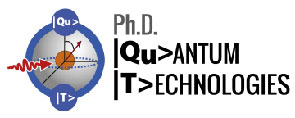Speaker
Description
In the last years, superconducting circuits have passed from being interesting physical devices to becoming one of the most promising contenders in the race towards the first fault-tolerant quantum computer [1].
In this context Quantum Non-Demolition (QND) read-out of superconducting qubits becomes an essential step in most computational operations and in protecting quantum information throughout them. QND read-out of superconducting qubits is usually achieved by detecting the frequency shift of a microwave resonator coupled to the qubit under test [2].
Improvements in terms of latency and scalability are not often discussed, despite the increase in size and complexity of modern quantum processors [3]. In this context, the phase detection capability of Josephson junctions can be exploited to develop alternative schemes [4]. We have successfully characterized [5] a flux tunable Josephson phase detector, called Josephson Digital Phase Detector (JDPD), that can be used to perform QND qubit read-out in situ by dynamically changing the applied flux through the two loops that define its structure.
Here we present a study about optimization of control and read-out fidelity of the circuit. The optimization is based on finely engineering the coupling between the circuit loops and external flux sources. We show that the system can be inserted in a Single Flux Quantum (SFQ) logic [6] environment thanks to the JDPD ability to project the qubit state in one of his two flux states in the double well regime. Thanks to the SFQ technology we are able to reach sampling frequencies in the GHz range. In addition to that we show that thanks to the double-loop layout of the JDPD it is possible to protect the system from unwanted asymmetries due to flux noise or fabrication issues.
References
[1] K. Morten, et al. Annual Review of Condensed Matter Physics 11: 369-395. (2020)
[2] A. Wallraff, et al. Phys. Rev. Lett. 95, 060501 (2005)
[3] F. Arute, et al. Nature, 574.7779: 505-510. (2019)
[4] A. Opremcak et al, Physical Review X 11, 011027, February (2021)
[5] L. Di Palma et al, in prep. (2022)
[6] O. Mukhanov, IEEE Trans. Appl. Supercond., vol. 21, no. 3, June (2011)

